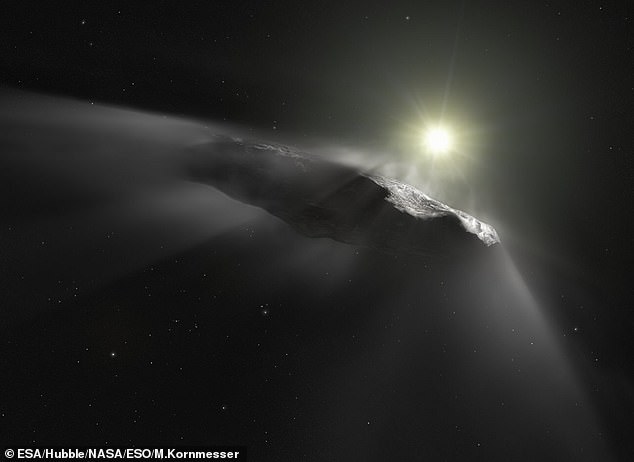Scientists Aim to Intercept Mysterious Interstellar Visitor

A Unique Opportunity to Study an Interstellar Visitor
A mysterious object is currently traversing our solar system, having journeyed through the vastness of space for billions of years. Dubbed 3I/ATLAS, it was first detected by NASA on July 1 and is only the third interstellar visitor ever recorded in our region of space. This rare event has sparked significant interest among scientists worldwide.
3I/ATLAS will reach its closest point to the sun on October 30, at a distance of 130 million miles (210 million km), before eventually disappearing from our view. Before it vanishes forever, scientists are considering sending a spacecraft to intercept this enigmatic object. The challenge lies in the object’s speed—over 37 miles per second (60 km/s)—which makes interception extremely difficult.
Researchers hope that reaching 3I/ATLAS in time could provide valuable insights into its origins and help answer broader questions about the formation of the galaxy. Some, like Harvard's Professor Avi Loeb, believe this mission could even determine whether the object is an alien probe.
Interstellar objects are far rarer than the thousands of meteors originating from within our solar system. Prior to 3I/ATLAS, the only known interstellar visitors were 'Oumuamua in 2017 and comet Borisov in 2019. This makes the current opportunity to observe 3I/ATLAS as it passes near the sun an extraordinary moment for scientists around the globe.
Big telescopes such as Gemini North in Hawaii and the Very Large Telescope in Chile have already observed 3I/ATLAS. Plans are also underway to use the James Webb Space Telescope for a closer look. However, to truly understand what 3I/ATLAS is made of, scientists argue that a spacecraft must get much closer.
The main issue is that 3I/ATLAS is moving too fast and is too far away for an Earth-based launch to reach it in time. In a recent pre-print paper, researchers from Michigan State University calculated that a spacecraft would need to have left Earth at 15 miles per second (24 km/s) on the day the object was spotted to stand a chance of arriving in time.
Instead, scientists suggest that space agencies should consider redirecting existing spacecraft towards 3I/ATLAS. One proposal involves using the Juno spacecraft, which is currently orbiting Jupiter. Professor Loeb suggests that instead of ending its mission by plunging into Jupiter's atmosphere, Juno could use its remaining fuel to head toward 3I/ATLAS, potentially meeting it in March 2026.
If successful, Juno's sophisticated instruments could provide unprecedented data about this interstellar object. However, not everyone is convinced that Juno has enough fuel or power to make the journey. Professor Jason Wright from Pennsylvania State University argues that Juno does not have enough fuel and its main engine is malfunctioning.
The European Space Agency (ESA) is also considering using its Jupiter Icy Moons Explorer (JUICE) probe. While JUICE may have more fuel than Juno, ESA is still uncertain if its course can be adjusted to align with 3I/ATLAS. Currently, there are no concrete plans to divert JUICE from its current orbit.
Another option involves using spacecraft currently orbiting Mars, such as Mars Odyssey or the Mars Reconnaissance Orbiter. According to researchers from Michigan State University, one of these spacecraft could reach 3I/ATLAS if launched as late as September. By boosting a Mars orbiter by 10,800 miles per hour (17,400 km/h), it could intercept the object before it leaves the solar system.
However, it remains unclear if any of these spacecraft have enough fuel to complete the trip. If a craft were able to reach 3I/ATLAS in time, it could mark a significant breakthrough in our understanding of the galaxy.
Dr Marco Fenucci from the European Space Agency's Near-Earth Objects Coordination Centre states that while the scientific return would be immense, the mission design would be complex and time-sensitive. Interstellar objects offer a unique chance to study the composition of other star systems, providing insight into how similar our solar system is to others.
By approaching the object, a spacecraft could analyze dust and ice surrounding it, capturing high-resolution images. This data could help astronomers understand how solar systems form and how chemicals necessary for life are delivered to habitable worlds.
Amid speculation that 3I/ATLAS might be of alien origin, a visit from one of our probes could help resolve the debate. Although the scientific consensus is that 3I/ATLAS is a comet, Professor Loeb maintains that it could be an artificial craft. He argues that objects of this size should arrive in the solar system once every 10,000 years, making 3I/ATLAS's path suspicious.
These concerns will likely be addressed by future observations as 3I/ATLAS gets closer to the sun, revealing more cometary activity if it is indeed a natural object.

Comments
Post a Comment